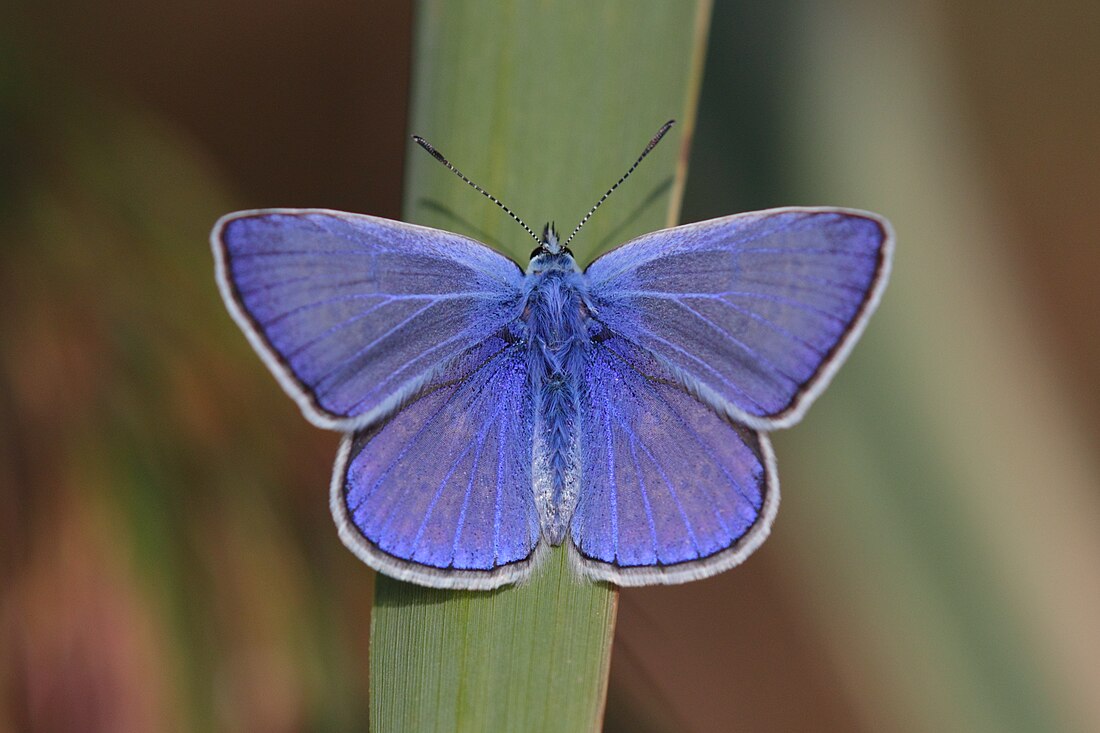Top Qs
Timeline
Chat
Perspective
Polyommatinae
Subfamily of butterflies From Wikipedia, the free encyclopedia
Remove ads
Polyommatinae, the blues, are a diverse subfamily of gossamer-winged butterflies (family Lycaenidae).[1] This subfamily of butterfly was discovered in 1775.[2] These butterflies have been considered one of the poorest studied groups within the family Lycaenidae.[3]
Polyommatus means many eyes. The blues derive its common name from the males of most species.[4]
This subfamily was long used to assign taxa of unclear relationships, and its contents and phylogeny are still in need of revision.
Remove ads
Species
The following four tribes are generally recognized within Polyommatinae,[5] with Polyommatini comprising most of the genera and species:
- Candalidini Eliot 1973
- Lycaenesthini Toxopeus 1929
- Niphandini Eliot 1973
- Polyommatini Swainson 1827
Appearance
The Polyommatinae have variations of blue wing coloration which are due to the differences in the nanostructure of the body scales.[5] The upper sides of the wings are covered in blue reflecting scales. Females have some blue scales at the base of its wings, but its main color is brown. The color of the butterfly is understood to be species-specific, and indicates genetic variation.[6]
The eyes of the Polyommatinae can be hairy or hairless depending on where it's from and how each tribe evolved. All species of the Lycaenidae family, except Genus of Everes, lack tails on the hindwing. The Polyommatinae has a false head on the back of its wings.[4] Almost all Polyommatinae have dots on the underside of its wings, with a medium to small wingspan ranging from .6-1.25 inches. Along with its wingspan, the Polyommatinae is a small butterfly.[2] There are only 38 total species within the Polyommatinae sub family, with only two being from Europe.[7] Most species of the Polyommatinae are found on the eastern side of the United States.[2]
Remove ads
Mating
Male Polyommantinae blue butterflies possess a complex system of androconia. Androconia refers to the scent scales on the butterflies' wings that attract mates. Along with these scent scales, the complexity of how the nanoarchitectures interact with white light is very important to support their formation and rigorous reproduction in subsequent generations. It has been demonstrated that these receptors and scales play an important role in the sexual communication of Polyommantinae butterflies in potential mate and competitor recognition.[6]
References
External links
Wikiwand - on
Seamless Wikipedia browsing. On steroids.
Remove ads

